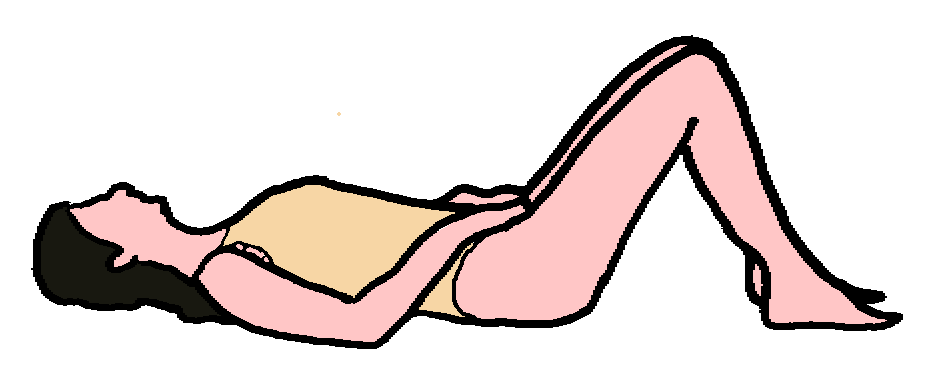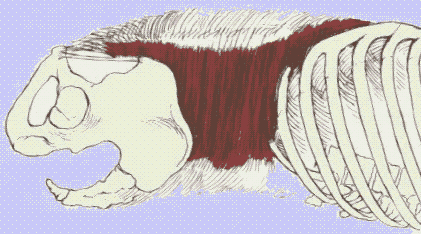|
|
|---|
The Zip and Hollow:- Start Position
- Lie on your back in the relaxation position with your knees bent toward your chest.
- Put your hands on the area of your abdomen that would be covered by the front part of a bikini.
(the “bikini patch”.
- Have your thumbs touching at the
navel, and your fingers touching at the midline, about 6 cm below the navel.
The Zip and Hollow:- Action
- Now imagine that you have to zip into a very tight pair of jeans: -
- Hollow the area under you thumbs and fingers toward your spine. There may
only be a very small movement. (Maintain Pelvic Neutral!)
- Now imagine (if it hasn’t aready happened), that the area under your fingers
is being zipped together like that tight pair of jeans! (keep the rest of your
body relaxed, and maintain Pelvic Neutral!)
(If you are having trouble making the above happen, try leaving just one hand
over the “bikini patch”, and sucking your thumb with the other- suck
gently for stage (2), and hard for stage (3)- Sounds weird, but it does help!).
(Chronic low back pain stabilization exercises,
Zip and Hollow, transversus abdominis,
Scroll right>>>>....)
|
The Pilates Zip and Hollow
|
Start Position

|
The Transversus abdominis:
(The Corset Muscle)
Right: Viewed from the front.
Below: Viewed from the side.
|

|
 |
What it does
This is an isometric abdominal exercise. Use it through the day to facilitate Transversus abdominis protection of the lower back - Further reading, refer ref (4).
Watch Points
Many Pilates and physiotherapeutic programs promote the "Zip and Hollow" together with
Multifidus activation in chronic low back pain stabilization exercises, but neglect the other muscles
of lumbar stability. That's not good! -see comments!
|
Comments
There are four muscles that are major "joint stabilizers" for the lower back:-
- The Transversus abdominis(1).
- The Multifidus(1).
- The Gluteus maximus, together with its co-contracters(2).
- The Psoas muscle (part of the "Iliopsoas" muscle group)(3).
If you are serious about
exercises for low back pain stabilization, you need to learn how to activate all of these muscles!
Reference
- The Official Body Control Pilates Manual Available from: http://www.bodycontrol.co.uk/
- SGT Gibbons, MJ Comerford, PL Emerson:
http://www.kineticcontrol.com/pages/
references/Publications/Psaos.htm
- M Comerford: Interpretation of Modified Force Closure Model
http://www.kineticcontrol.com/pages/
newsletters/Winter%202002.pdf
- Dynamic Lumbar stabilization exercises: Fine Control of
the Zip and Hollow
(Abdominal muscle exercise & chronic low back pain stabilization exercises: The Zip and Hollow for the
transversus abdominis,
© Bruce Thomson, EasyVigour Project
scroll up^^^^.....
|


